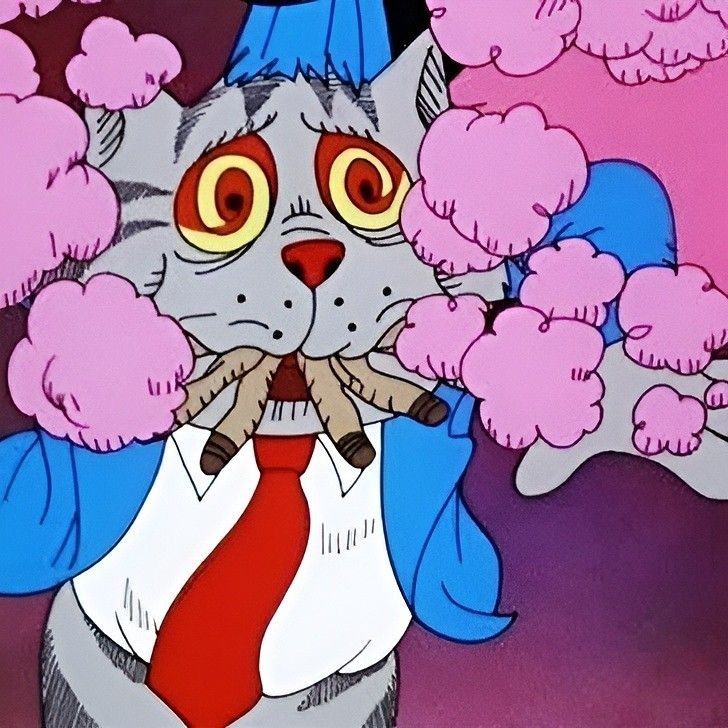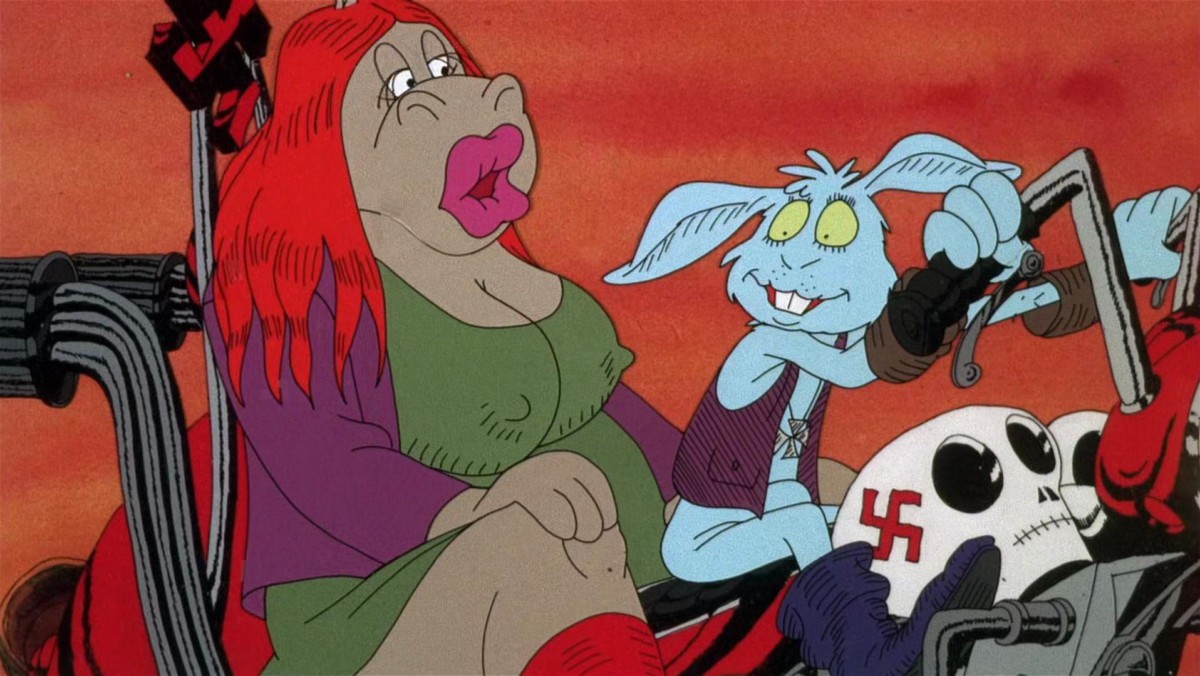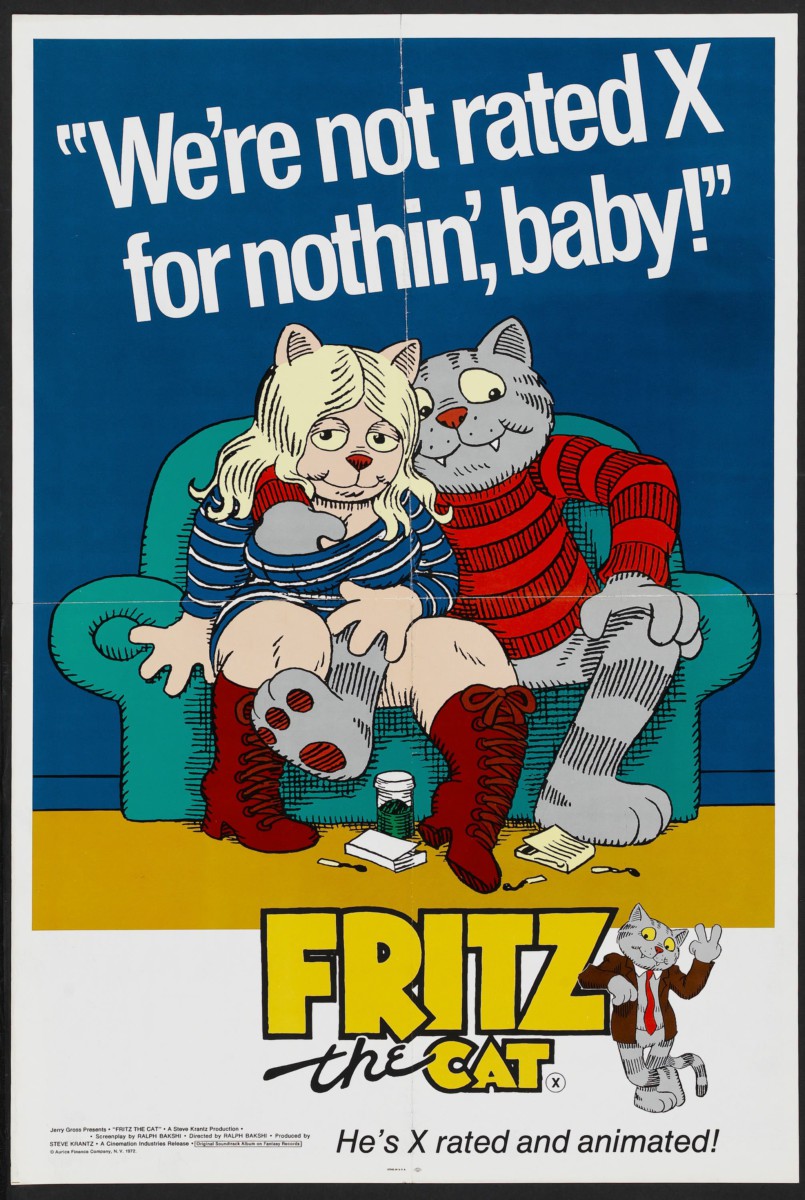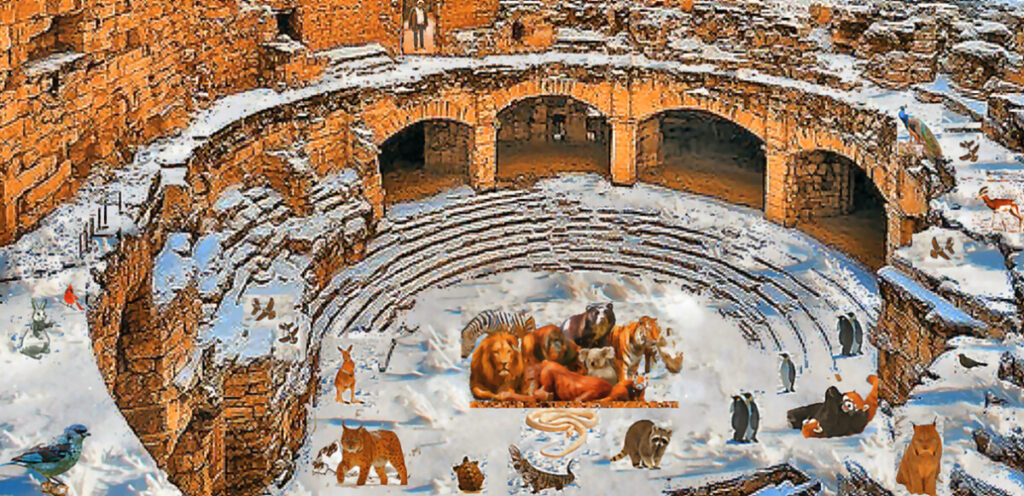Psychotropic Cinema: Fritz the Cat
Psychotropic Cinema: Fritz the Cat
Directed by Ralph Bakshi, 1972
Countercultural icon Robert Crumb created the character of Fritz the Cat, and animator Ralph Bakshi made his name with this cult stoner adaptation. Upon its release, much was made of the fact that it was rated X. The film earns its rating by featuring numerous animated depictions of drugs, sex, and meaningless violence. There’s also a pretty adept satire of college-age “hipster intellectuals”, as well as some inventive animation techniques. Very much a product of its time, it walks a fine line between reveling in the shenanigans of its feckless hero and skewering his pompous, hypocritical, sexist, racist beliefs.
Fritz picks up three coeds and takes them to a Greenwich Village pot party that turns into a cartoon orgy in the bathtub.
Aside from character design and a few character names, Bakshi’s film largely departs from Crumb’s comic, using only its premise while discarding most of its original storylines. The film incorporates some of Crumb’s obsessions but throws Fritz into a series of setpieces dreamed up by Bakshi himself. Roughly divided into three sections (NYU; Harlem; and West Coast political violence), the film begins with Fritz and his buddies on the make, pretending to be folk singers in Washington Square Park to pick up girls. Fritz picks up three coeds and takes them to a Greenwich Village pot party that turns into a cartoon orgy in the bathtub. Stupid violence-prone cops break up the fun. Back in his dorm room, the cynical and nihilistic Fritz works himself into a frenzy, ultimately setting the school on fire by accident. He then escapes to Harlem.
One of the most original scenes in the film is the introduction to this second section. As a still street image grows from far in the distance, a hipster crow shuffle dances to Bo Diddly before exiting the scene once the still image fills the frame. However, the film seems to stumble when introducing its African-American characters. The exaggerated character design is troublesome. In the universe of the film, Black people are crows, Fritz is a white cat, and the girls he has sex with are dogs (I think). Policemen are pigs of course, but weirdly, Bakshi makes one of the cops Jewish and even has an extended scene set in a synagogue full of bearded praying rabbis. There is an element of making fun of the awkward ways well-meaning ignorant white people relate to
Fritz parrots progressive liberal talking points in order to have sex with naïve coeds.
Black people. Bakshi and Crumb share the film’s main message, that the fence-sitting poseur is more damaging than the true believers on either side. Fritz parrots progressive liberal talking points in order to have sex with naïve coeds and then he is desperate for validation from the crow denizens of the Harlem bar. But everything he chooses to do makes everything worse, culminating in Fritz starting a race riot that results in his new friend Duke’s death. This sequence is one of the film’s best, as pool balls mimic the beating of Duke’s heart, slowing and then stopping as Duke dies in the street. Bakshi used African-American actors for the character voices (John McCurry as Duke and Rosetta LeNoire as Bertha). However, there’s an edge to the satire that veers uncomfortably close to ugly stereotyping and minstrel-show attributes. This aspect is present in Crumb’s art, too, with the tension between commenting on troubling imagery and representing it. The sex scene between Fritz and Big Bertha plays off of ugly stereotypes that are both misogynistic and racist. While these are engaging and worthwhile concepts to explore, they feel out of place in a trippy farce that marketed itself as a fun, hip laugh riot.
The third section opens with Fritz and his tough, sharp-tongued girlfriend Winston, who resembles one of the coeds from an earlier scene but is clearly a different character. They’re driving to the West Coast but Fritz ditches her when their car runs out of gas and he gets involved with some heroin-shooting Nazi bikers who, confusedly, are revolutionaries with a plan to bomb a power station. This section is the least comical, and thematically the darkest. Winston, the girlfriend, is humorless, always complaining, and resignedly berates Fritz for his lack of responsibility. The revolutionaries Fritz falls in with are brutal, mean, hateful, and violent. Blue, the bunny biker, wears a swastika and only pays attention to Harriet his horse girlfriend when she scores the heroin he shoots. The other figures are an English ghost and a female lizard. Fritz actually feels some remorse for the brutality of his new friends, and just after he plants the bomb for them, he decides to go back and disarm, but he has been left behind and blows up with the plant. Being a cartoon, he survives and is later visited in the hospital by Harriet and the three college coeds from the first section. He then has a menage a quatre in his hospital bed.
The animation style and design elements incorporate altered states.
Is Fritz psychedelic? Absolutely—the animation style and design elements incorporate altered states and the music is propulsive and funky. It might seem strange in today’s media landscape, where there is so much adult-oriented animation content, but the film’s release was a big deal at the time. Like Russ Meyer’s Beyond the Valley of the Dolls, it was rated X and was extraordinarily popular, earning over 90 million dollars on its initial budget of $800,000. Crumb hated the film so much that, as soon as it was released, he killed off Fritz, who gets an icepick in the head after abusing the wrong girl. He believed Bakshi distorted the character and was angry with his wife for signing the rights to Bakshi without his permission. It’s ironic, considering how closely their interpretations of the character are. The producers were so pleased by the film’s return on investment that, in 1974, they made a sequel without Crumb or Bakshi. It’s not worth viewing.
There are some inventive sequences, and there is even some pointed satire, but a lot of context is needed to unpack the racial and sexual dynamics at play in the film’s universe.
Fritz the Cat is available to stream on Amazon and MGM+; and on Blu-ray from Kino Lorber.
Gallery
Recent Articles
2025 Year In Review
•
December 31, 2025
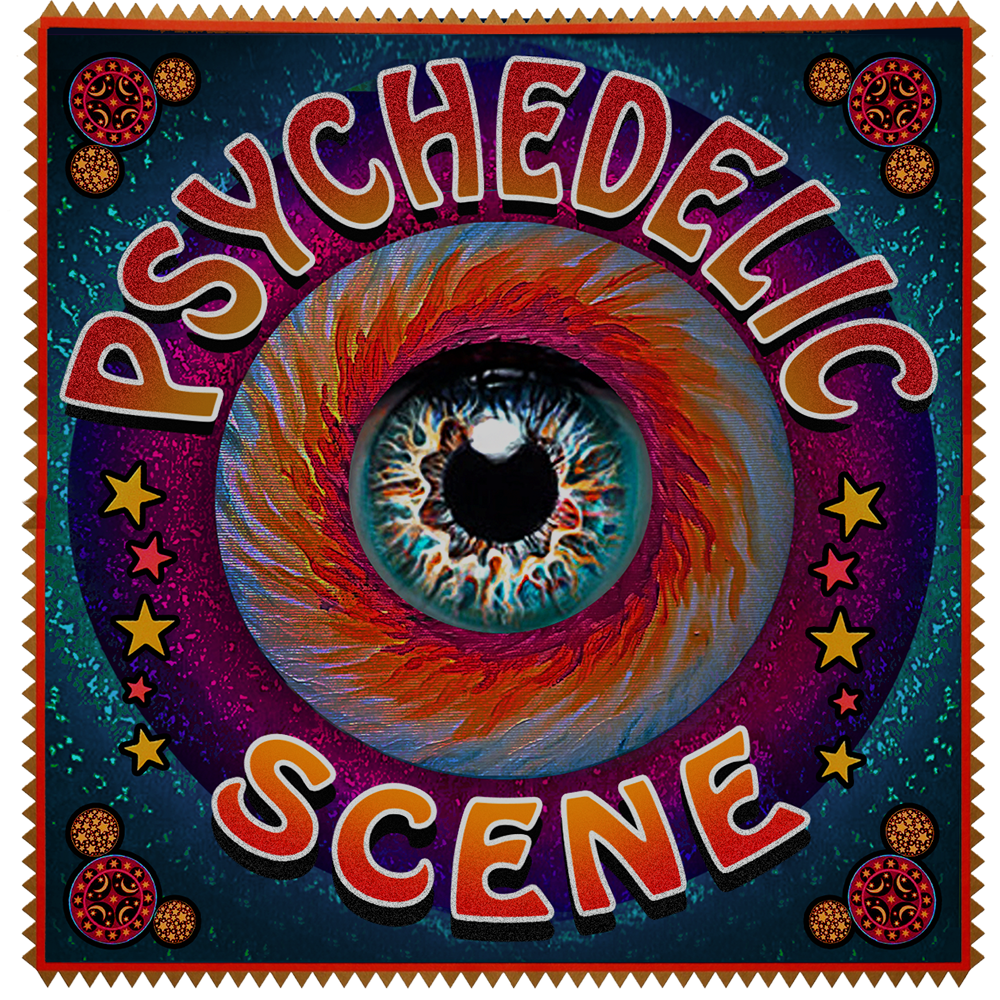
Loading...
A Tale of Crescendo ~ Chapter 5: The War Begins; Chapter 6: The Great Hall
- Bill Kurzenberger
Jorma Kaukonen 85th Birthday Celebration in San Francisco – Concert Review
- Kyle Siegrist
A Tale of Crescendo ~ Chapter 3: The West & The East; Chapter 4: The First Crescendo
- Bill Kurzenberger
